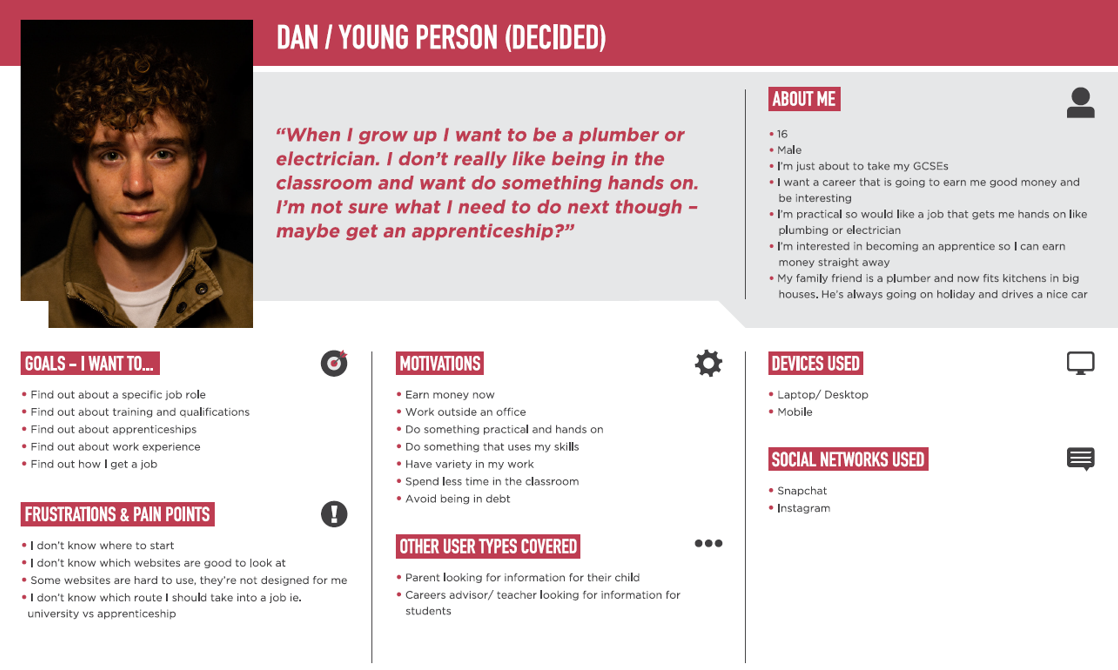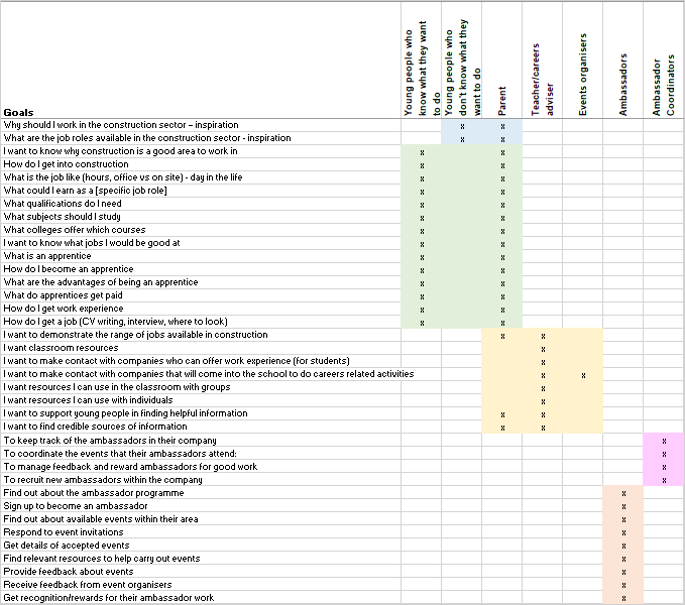Download your free persona templates
Digital personas are 'archetypal' users - they tell stories about users in ways that people in an organisation can understand the user and what they want.

Why we love digital personas
- They act as 'stand ins' for real users and help guide decisions about website aims, functionality, design and content.
- They help you focus on your users’ goals, motivations and behaviours, and how your digital channels should help them
- Each persona represents groups of users with common goals, so you only have to remember between 3-5 personas, even if you have many more user groups
- As well as helping you focus on what to develop, personas highlight what not to develop
The most effective personas are created through user research - where the data is based on what real users want - not made up by developers. To do this, you need to identify target user audiences, interview them and analyse their feedback. The key areas you’ll want to explore are user goals, their pain points and their motivations.
Identifying user goals
Goals are the most important part of developing digital personas. Goals are used to differentiate one persona from the next and are the backbone of your personas.
To find out your users’ goals you need to ask them! What do they want to achieve on your website or app? What questions do they have and what content will answer these questions? If your site is transactional, what information do they need to help them through their online journey?
Armed with your user goals, you can then begin to create your goals matrix.
- Make a long list of all your goals in a spreadsheet, making sure not to dismiss any at this stage.
- Along the top, list out all your user types
- Match goals to user until you start to see a pattern emerge

Finding your users’ pain points
As you begin to establish your users goals you will also encounter their frustrations or pain points. Ask your users what they currently do to achieve their goals (as established above). Chances are, they are not always successful. So, what stops them?
Often, we hear users complain about lack of time or being unsure where to look for the answers. Sometimes it is the site content that causes frustration, especially if it is filled with internal jargon and acronyms. It may also be outside pressures that case your user’s pain, such as a nagging parent or hard-line boss.
By exploring these pain points in more details you will learn what your website or app could do to help users avoid these annoyances.
Establishing what motivates your user
To have a clear picture of why your users behave the way they do, its important to understand their motivations and context. This could be their employment situation or home life. It might their core values or the social pressures they feel.
By understanding their motivations, you can also establish what are their priority goals, which in turn will help guide your website or app strategy.
Building your digital personas
Armed with your list of goals, pain points and motivations you begin to complete your digital persona template. Here are three PowerPoint templates to get you started.
First, it is time to bring your personas to life. There are many different categories you could include here:
- About me
- Social networks I use
- The make and model of my car
- TV shows I watch
- My hobbies
- Cadbury’s vs Galaxy chocolate
- Lover or hater of Marmite
The list is pretty much endless! The important thing to remember here is… what is going to make your personas memorable within your organisation so they will actually get used. (Read more about how to use personas)
To start, we recommend creating an ‘About me’ section. Consider who these users are? Are they predominantly female? How old are they? What are their interests or online browsing habits?

Finally, give your persona a name and a photo to turn them into a believable real user you and your team can involve in your web development process.
Find out more about personas: what they are and how to use them


